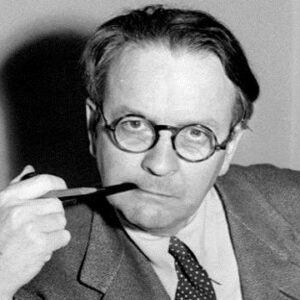Raymond Chandler is widely regarded as the genre’s master, and the majority of his works are considered literary classics. He paints a vivid picture of the 1930s Los Angeles crime scene in his works. Though he began as a short story writer inspired by Dashiell Hammett, a hugely successful pulp fiction author, he progressed to writing novels that were later adapted into films, some of them multiple times. The screen adaptations of his novels demonstrated that it is possible to maintain suspense and maintain an audience’s interest. Though his narrative style was racy, the fictional detective character he created, Philip Marlowe, was an emotionally and morally upright man. Another distinguishing feature of the author’s novels was their liberal use of similes, elevating them above the level of pulp fiction to that of literary classics. Thus, he was able to maintain the existing formula that the publishers desired while elevating it to a new level. While the author is revered today, some of his contemporary critics characterized his style as rambling and incoherent. They took issue with the way he treated black people and homosexuals in his works.
Childhood & Adolescence
Raymond Chandler was born in Chicago, Illinois, on July 23, 1888, to Maurice and Florence Chandler. His father was an alcoholic who worked as a railway engineer. Following the divorce, his mother brought him to England to live with his grandmother in 1895.
In 1900, he was admitted to Dulwich College. His teachers described him as intelligent but slightly absent-minded. He absorbed the English aristocratic values of honor, service, and chivalry while living here.
He did not attend college and instead focused on honing his foreign language skills. With this in mind, he spent his adolescent years in Paris and Munich.
Career of Raymond Chandler
Raymond Chandler returned to England in 1907 and enlisted in the civil service. He came in third place out of 800 candidates and acquitted himself admirably on the classics paper. He, on the other hand, struggled to fit into the bureaucracy.
He immigrated to the United States in 1912 and experimented with a variety of fields. He enlisted in the Canadian Expeditionary Force during ‘The First World War.’ He saw action in France’s trenches.
As an accountant, he joined the Dabney Oil Syndicate. By 1933, he had ascended to the Vice-Presidential position. He was, however, terminated from the company as a result of his alcoholism and absenteeism.
His financial crisis was exacerbated by ‘The Great Depression.’ To supplement his meager income, he returned to his original passion of writing.
He began writing short stories; his first, titled ‘Blackmailers Don’t Shoot,’ was published. It first appeared in the renowned pulp crime fiction magazine ‘Black Mask’ in 1933.
In 1934, the ‘Black Mask’ published two detective fiction short stories titled ‘Smart-Aleck Kill’ and ‘Finger Man’. He acknowledged that the narrative style was crude, but it netted him much-needed funds.
Two of his short stories in the crime genre, titled ‘Killer in the Rain’ and ‘Spanish Blood’, made their debut in 1935. Both were featured in ‘Black Mask’. The title of a collection of his short stories became ‘The Killer in the Rain.’
Another of his short stories was ‘Noon Street Nemesis.’ It first appeared in 1936 in the ‘Detective Fiction Weekly’.
‘The Bronze Door,’ the author’s first non-crime short story, was published in 1939. Although the story featured detectives and strange deaths, the plot was not centered on criminal investigation.
In 1939, ‘The Great Sleep’ was published. It served as the inspiration for the celebrated fictional detective Philip Marlowe. The novel’s plot was intricate, with numerous twists and turns and intrigue.
Numerous screenwriters adapted his novel, ‘Farewell, My Lovely.’ In 1944, one of his numerous film adaptations, ‘Murder, My Sweet,’ introduced Marlowe to the silver screen for the first time.
In 1951, he published his novel ‘Professor Bingo’s Snuff,’ in which the protagonist inhales a magical snuff that renders him invisible. He then murders his wife before turning himself in to the police.
Significant Works of Raymond Chandler
He collaborated with director Billy Wilder on the screenplay for the film ‘Double Indemnity,’ which was based on James M. Cain’s novel of the same name. At the box office, it grossed a whopping $5,000,000.
In 1946, he wrote the screenplay for the film ‘Blue Dahlia.’ It was his first attempt at writing a screenplay that was not based on a novel.
‘The Long Good Bye,’ published in 1953, is considered an autobiographical sketch of the writer’s emotional turmoil during his wife’s illness and eventual death, as well as his alcoholism and suicide attempt.
Awards and Accomplishments
Raymond Chandler won the ‘Mystery Writers of America’s Edgar Award’ twice, first for ‘The Blue Dahlia’ in 1946 and then for ‘The Long Goodbye’ in 1949. (1955).
He was nominated for an Academy Award for ‘Best Screen Play’ for ‘Double Indemnity’ in 1945 and for ‘The Blue Dahlia’ a year later.
Personal History and Legacies
He fell in love with Cissy Pascal, a married woman, and married her following her divorce in 1924. He was eighteen years his senior and she was a model. Their relationship was strained for the most part, but they were emotionally reconciled.
Though he was associated with numerous women, Raymond Chandler adored his wife. When she died in 1954, he fell deeper into depression and alcoholism. His loneliness drove him to make a suicide attempt.
He died of pneumonia at Scripps Memorial Hospital on March 26, 1959. Chandler’s literary agent Helga Greene, with whom he was associated, inherited his $60,000 estate following a 1960 lawsuit victory.
Estimated Net Worth
The Estimated net worth of Raymond Chandler is unknown.
Trivia
This renowned author made a brief cameo appearance in ‘The Double Indemnity’ near the film’s conclusion. The author is seen sitting in a chair outside a character’s office.
Though he was born in America, this eminent writer became a naturalized British citizen. He did, however, re-enter the United States in 1956.


